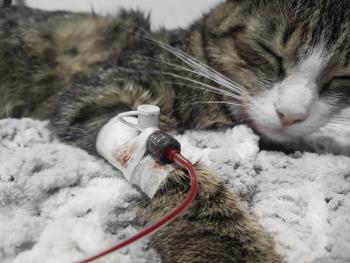
OSU to break ties with WSU veterinary program
Officials at Washington State University (WSU)'s College of Veterinary Medicine are exploring ways to tighten the budget in the anticipated loss of future veterinary students and funding.
Officials at Washington State University (WSU)'s College of VeterinaryMedicine are exploring ways to tighten the budget in the anticipated lossof future veterinary students and funding.
The university has benefited financially because of a partnership withOregon State University (OSU)'s veterinary medicine program. Students ofOSU's veterinary medicine program - operating part-time since the 1970s- have attended WSU's College of Veterinary Medicine to help complete theirfour-year curriculum.
OSU's program will no longer have to rely on WSU now that Oregon statelegislature has approved a financial package totaling $3.82 million in funds,school officials report. The funds, along with private donations and bonds,will be applied toward delivery of the entire four-year professional programof veterinary medical education at OSU's College of Veterinary Medicine.
Construction is slated to begin this summer on a new 30,000 sq. ft. hospital,laboratory and instructional facility focused on small animal medicine.It is scheduled for completion by fall 2003.
Time is ticking at WSU
In mid-June, WSU's Board of Regents approved capital budget prioritiesfor 2003-2005. One institutional priority included the "restructuring"of its veterinary medicine program, in the wake of OSU's news.
"The use of the term 'restructuring' is misleading in that it wascoined by the university's budgetary chief for want of a better term,"says Dr. Warwick Bayly, associate dean of the WSU veterinary college. "Itrefers to restructuring the college's fiscal basis and not its organization."
The noose has tightened on university budgets across the nation, includingthat of WSU.
"It is encouraging that the university considers it important enoughin these times of financial austerity and state budget shortfalls to makeour situation the subject of a specific budget line request," saysBayly. "WSU is planning to ask that the state of Washington providesthe funds needed to avoid any change in the current DVM program."
Meanwhile, the college and university are proposing to increase the sizeof the class admitted to WSU to offset potential losses.
"However, the additional funds forthcoming via the associated tuitionwill not be sufficient to replace all OSU linked support," says Bayly.
The program currently in place has OSU sending 36 students per year toWSU for the second year and the equivalent of three-quarters of the thirdyear of the DVM program. While at WSU, OSU students pay WSU in-state tuitionand OSU pays an additional support fee. These fees total $2.4 million.
Not a done deal?
Although WSU will likely have to make up for that $2.4 million, WSU hasnot yet received official notice that OSU is withdrawing. OSU has simplyreceived funding to proceed with construction. Obtaining additional fundingin the next biennium will be necessary to operate its four-year program.
Securing initial funds for OSU's veterinary plan was a tedious work inprogress, according to the dean of the college.
"Strong legislative support that has been building over the yearsprompted the funding. This was supposed to happen a long time ago,"says Dr. Howard Gelberg, OSU's dean. "Finally there are people in thelegislature who are in positions of senior leadership who have been in supportof this for years."
Contents of package
By fall of 2003, OSU's veterinary program will increase from 36 to 48students.
The school currently has a large animal teaching hospital to complementits future small animal hospital. It anticipates the hiring of 25 to 30faculty, but specialties are not yet decided.
Program was inconvenient
The average veterinary student entering the OSU program is typically24 years old. Many are married with families.
"So it was disruptive to uproot jobs and students out of schooland ask them to move twice during their education once to Pullmanand once back," says Gelberg. "There was concern we weren't providingthe proper service to the people of Oregon, because we don't have a fullfaculty here. We weren't able to serve the agricultural community fully."
From WSU's vantage point, Bayly says the program was great while it lasted.
"The regional program has been very successful from our perspective,and I believe that OSU also thinks that it has worked well," he says."However, they now believe that they are ready to become a stand aloneCVM, and we wish them well."
Newsletter
From exam room tips to practice management insights, get trusted veterinary news delivered straight to your inbox—subscribe to dvm360.




